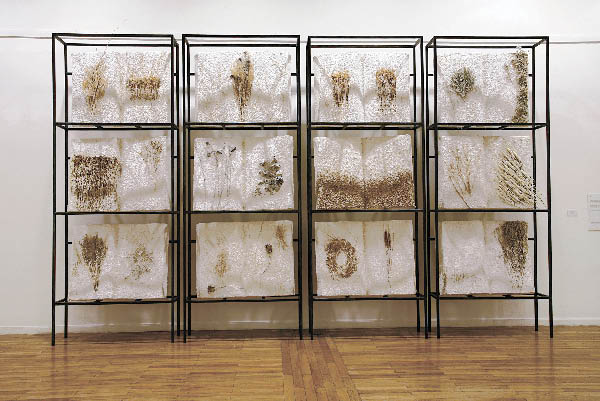|
Move Over! Installation Art in China
By staff reporter WU BING
THE field of Chinese installation art was ignited by a single event: a one-man show at the National Art Museum in Beijing staged in the 1980s by American artist Robert Rauschenberg. In the following three decades many Chinese artists plunged headlong into the practice and development of this cuckoo art form, winning the admiration of established art circles and the public at large. The installation genre employs a wide variety of media and art forms – painting, sculpture, architecture, music, theater, poetry, prose, film, photography, and audio and visual recording; its lack of restrictions means almost anything on hand can be turned into art by inspired installation artists, including the “viewers” themselves.
 |
| Compendium of Materia Medica by Shi Hui. |
Working the Space
The Travel of Time is an installation work created for the Shanghai World Expo by Guan Huaibin, a professor from the Beijing-based China Academy of Art. Now standing in the Jiangnan Square of the Expo Park, it casts a spell over curious and fascinated Expo visitors, drawing them into the “ribcage maze” to become, as the artist intended, part of the work. The participation and interaction of viewers is what distinguishes installation art from conventional genres.
The work is set in the former headquarters of the Jiangnan (South China) Machinery Manufacture Bureau, a witness to the ups and downs of the industrial revolution of modern China over the past century. It utilizes the keel skeleton of the Baomin (Safeguard the People), an advanced cruiser built by the Bureau in the 1880s and retired from service in 1920. Numerous vertical and horizontal bars form a kind of grid maze that visitors can enter or exit through nine portals and view along the way the hundreds of fragments of the warship that the artist has carefully integrated into the work. They can also connect with the natural earth underfoot when they reach any of the three round sunken patios. Guan Huaibin believes that the benefits of modernity and its material abundance should not numb people to basic human needs and that it is the duty of every generation to construct cities that cater to the essence of humanity and speak to the human condition. Guan hopes that his work can provide an occasion for people to review the past, scrutinize the present and envision the future, all through participation in a public activity. To enable viewers to feel the pulse of history and engage with each other is the point of his works and more significant than any aesthetic objective.
|
